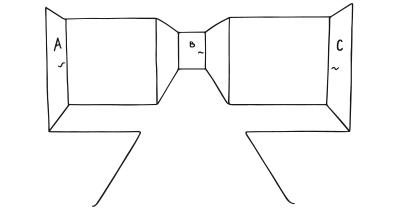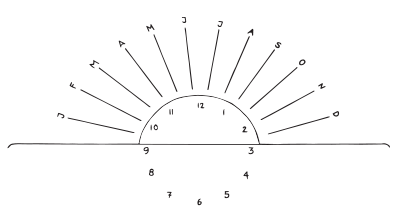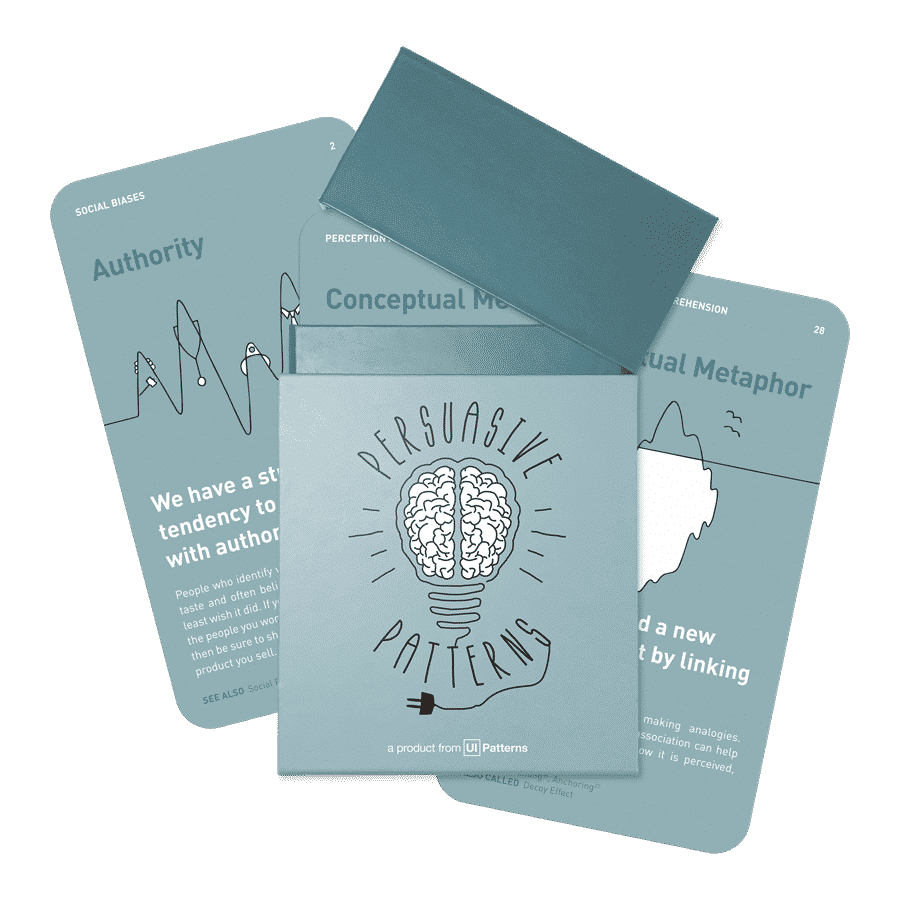Persuasive Technique
This persuasive pattern is part of the Persuasive Patterns printed card deck.
The Persuasive Patterns Card Deck is a collection of 60 design patterns driven by psychology, presented in a manner easily referenced and used as a brainstorming tool.
Get your deck!The Endowed Progress Effect refers to the phenomenon where initial progress toward a goal, often provided externally, increases an individual’s motivation to achieve that goal. This effect leverages the psychological principle of momentum, making people more likely to continue working toward a target once they perceive themselves to be on their way.
Imagine deciding to give your car a much-needed wash. The task can feel overwhelming, especially if your car is caked in mud. But research by Nunes & Dreze (2006) suggests a simple trick to boost your motivation. Consider a car wash that offers loyalty programs with punch cards. If you receive a card with (first story): a few stamps already pre-filled, representing a bit of “pre-washing” progress, you’re more likely to complete the card and return for a free wash compared to receiving a blank card. This initial progress creates a sense of accomplishment and motivates you to finish the task.
Similarly, many online platforms leverage the Endowed Progress Effect to encourage users to stick with tasks or establish new habits. For instance, a financial budgeting app might similarly provide users with a pre-populated budget template upon signup, functioning as their initial “pre-filled stamps.” This template could include common expense categories and some pre-allocated amounts based on average spending patterns. Completing and customizing this initial budget feels like progress, motivating users to continue tracking their spending and adhering to their financial goals. Studies by Monroe (2018) on financial behavior change support the effectiveness of pre-commitment strategies in establishing positive financial habits. By providing users with a sense of progress early on, budgeting apps can nudge them towards continued engagement and achieving their financial goals.
By providing a psychological nudge in the form of initial progress, we can encourage users to take action, complete tasks, and ultimately achieve their desired outcomes.
The study
One of the most influential studies that helped establish the Endowed Progress Effect was conducted by researchers Joseph C. Nunes and Xavier Drèze in 2006. Their experiment utilized a loyalty card program at a car wash to demonstrate how perceived progress towards a goal can significantly motivate consumers to complete the required purchases faster. Customers were given loyalty cards where they needed to accumulate a certain number of stamps to receive a free car wash. Some customers were given a card requiring eight stamps with no stamps to start, while others received a card requiring ten stamps but with two stamps already awarded. The result was telling; the group with the two pre-awarded stamps showed a higher completion rate and completed the card faster, even though both groups needed to make the same number of purchases to earn the reward.
This seemingly small advantage – a perceived head start – significantly boosted motivation and task completion rates.
Nunes, J. C., & Drèze, X. (2006). The Endowed Progress Effect: How artificial advancement increases effort. Journal of Consumer Research, 32(4), 504-512.
The Endowed Progress Effect operates by giving individuals an initial boost toward a goal, making the distance to completion seem shorter. This initial progress creates a sense of momentum and commitment, encouraging individuals to keep working toward the goal. For instance, loyalty programs often offer a “free” stamp or points toward a reward, making customers more likely to continue purchasing to reach the reward threshold.
The Endowed Progress Effect taps into several psychological principles that drive human behavior towards goal completion. Central to understanding this effect is the role of Loss Aversion and the Goal-Gradient Effect.
Loss Aversion, a cornerstone of behavioral economics, posits that individuals prefer avoiding losses to acquiring equivalent gains. When applied to the Endowed Progress Effect, the initial progress given in any task is perceived as a gain. Once this progress is perceived as part of one’s own achievement, the prospect of losing it by not completing the task becomes a significant motivator. For example, if a fitness app shows that a user has already burned some calories towards a larger goal as part of an initial setup, the user is motivated to continue exercising to avoid losing the progress made.
Simultaneously, the Goal-Gradient Effect asserts that people’s efforts increase as they draw closer to achieving a goal. By providing users with a sense of initial progress, the Endowed Progress Effect artificially places them nearer to their goal, enhancing their motivation to continue. This is clearly observed in loyalty programs where customers are given a few points to start; this perceived proximity to the reward increases their purchase behaviors to achieve the full benefits quicker.
The Zeigarnik Effect suggests that people remember uncompleted or interrupted tasks better than completed ones. This psychological phenomenon can be harnessed in conjunction with the Endowed Progress Effect to increase user engagement and retention. By initiating progress and then leaving a task subtly incomplete, designers can create a cognitive tension that motivates users to return and finish the task. For example, a language learning app might show progress towards the next level of proficiency but leave the final lesson of the current level incomplete, compelling users to return to complete the module and relieve the tension of the unfinished task.
Additionally, these principles work in tandem with basic motivational theories. Motivational Intensity Theory suggests that the amount of effort individuals are willing to invest depends partly on their perceived probability of success. In the context of the Endowed Progress Effect, giving individuals a head start in a goal-oriented task artificially increases their perception of the likelihood of success, which in turn motivates them to invest more effort than they might have otherwise.
Meanwhile, Cognitive Evaluation Theory adds another layer of understanding, indicating that intrinsic motivators are crucial for sustained engagement in an activity. By providing early progress, individuals feel a sense of autonomy and competence, which are critical components of intrinsic motivation. This sense of early achievement can convert an externally set goal into an internally endorsed endeavor, increasing personal investment and persistence.
In a more nuanced application, the effect also plays on the Commitment & Consistency technique, where the small initial progress leads to a psychological commitment to the goal. This commitment encourages individuals to continue their behavior to avoid Cognitive Dissonance, a discomfort caused by holding conflicting attitudes or behaviors.
Therefore, by structuring environments or tasks where early progress is visible and felt, designers and planners can significantly enhance individual engagement and increase the likelihood of completion, using these deeply rooted psychological triggers. This technique not only motivates but also aligns with an individual’s need for consistency, leveraging intrinsic motivations that sustain long-term engagement.
Designing products using the Endowed Progress Effect
The Endowed Progress Effect is particularly effective at enhancing user engagement and expediting goal achievement. Designing for this effect thoughtfully can transform user interaction with products by providing them with a perceptual head start. Here’s how designers can integrate this principle effectively into digital products.
The foundational pillar is having an intuitive system of progress indicators. For instance, a language learning app could show a progress bar filling up as users complete initial easy lessons. This visual cue not only informs users about their current status but also motivates them by showing how much they’ve accomplished, sometimes with a boost given at the start.
In loyalty programs, applying the Endowed Progress Effect can be particularly influential. By awarding customers with starter points or a partially completed stamp card, businesses can increase the likelihood that consumers will complete additional purchases to achieve a reward. This method reduces the perceived effort needed to reach the goal, making the task seem more attainable.
Subscription-based services can also benefit from this effect. Offering a trial period that counts towards subscription time can motivate users to continue the service after the trial, leveraging the psychological commitment to progress already made. This strategy can make users feel they are closer to enjoying full membership benefits, thus encouraging conversion.
For educational platforms, segmenting courses into modules and unlocking the first few can make users feel they are progressing from the start. This method draws users deeper into the content, encouraging them to continue with the course driven by the desire to complete what they’ve begun.
However, it’s crucial to balance the initial progress given and the remaining effort required. Offering too much of a head start can undermine the perceived value of achieving the end goal, while too little might not trigger the desired motivation. Testing different levels of endowed progress with target user groups can help determine the optimal balance that motivates engagement without diminishing the perceived challenge.
A practical application of this can be seen in project management tools. For instance, when a new user signs up, the tool could automatically set up a simple project template with the first few tasks already marked as complete. This not only demonstrates how the tool works but also gives users an immediate sense of achievement and familiarity with the product.
Similarly, in e-commerce, you might streamline the checkout process by using predictive text and autofill to complete address fields, subtly applying the Endowed Progress Effect by reducing the perceived amount of effort left to finalize the purchase. Each step that appears completed, or nearly completed, encourages the user to proceed, feeling closer to the goal of purchasing.
Ethical recommendations
Unethical use of the Endowed Progress Effect can manipulate users or create a false sense of accomplishment. For instance, offering excessive initial progress can devalue the overall goal, making it seem less significant.
The Endowed Progress Effect should be used transparently. If progress is measured through points or badges, users should understand how these are awarded and what they represent. A lack of transparency can breed suspicion and make users feel like they’re being tricked into completing tasks.
Consider following these recommendations to ensure ethical use of the Endowed Progress Effect:
- Focus on authentic progress
Provide initial progress that reflects genuine user actions, even if it’s a small amount. Authentic progress builds trust and motivates users to achieve more. - Be transparent
Clearly explain how progress is measured and what it signifies. This fosters trust and a sense of agency in users. - Balance progress with effort
Ensure the amount of initial progress aligns with the effort required to complete the overall goal. Overdoing it can diminish the perceived value of the goal itself. - Respect user choice
Don’t force users to accept pre-filled progress. Allow them to opt-out if it feels inauthentic or overwhelming.
Examples
Duolingo
The popular language learning app, unlocks the first few lessons of a course for free. These initial achievements provide a sense of progress and encourage users to subscribe for continued learning.
Spotify
Spotify offers a free trial with access to its premium features. By experiencing the benefits of the premium service during the trial, users are more likely to subscribe after it ends, feeling they’ve already invested time and progress.
LinkedIn displays a progress bar towards profile completion, motivating users to fill out their information. Completing the profile unlocks features and increases visibility, further incentivizing users to invest time and effort.
Trigger Questions
- Can we visualize progress through elements like bars, badges, or checklists?
- How can we celebrate small wins and acknowledge user achievements?
- Do users understand how progress is measured and awarded?
- Can we segment initial progress into smaller milestones for a sense of achievement?
- Can we personalize progress tracking to individual user goals?
- Is the amount of initial progress balanced with the effort required to complete the task?
Pairings
Endowed Progress Effect + Social Proof
Social proof leverages the influence of others to validate our choices. This can be particularly effective when paired with the Endowed Progress Effect. For instance, a fitness app (e.g., Peloton) might showcase the number of users who have completed a specific workout (Social Proof), combined with a progress bar indicating how many workouts a user has completed themselves (Endowed Progress Effect). This combination uses social influence to motivate users to keep exercising and “keep up” with others.

Early help speeds up goal achievement

We assume the actions of others in new or unfamiliar situations
Endowed Progress Effect + Rewards
Consider a loyalty program that offers bonus points for signing up. These initial points provide a sense of accomplishment and nudge users to make their first purchase to earn additional rewards.

Early help speeds up goal achievement

Use rewards to encourage continuation of wanted behavior
Endowed Progress Effect + Scarcity Bias
People tend to value things more when they are perceived as scarce or limited-time. This can be a powerful complement to the Endowed Progress Effect. Imagine an e-commerce store offering a limited number of bonus points for completing a profile combined with a countdown timer indicating how long the offer remains valid. This combination creates a sense of urgency and motivates users to complete their profile quickly to secure the additional points.

Early help speeds up goal achievement

We value something more when it is in short supply
Endowed Progress Effect + Framing Effect
The way information is presented can influence how users perceive it. This can be strategically used with the Endowed Progress Effect. For instance, a language learning app might display the number of lessons completed, phrased as “You’ve unlocked 20% of the course!” instead of simply showing the raw number. This framing emphasizes the progress already made, motivating users to continue learning.

Early help speeds up goal achievement

The way a fact is presented greatly alters our judgment and decisions
Endowed Progress Effect + Need for Closure
We have a natural desire to complete tasks and experience closure. This aligns well with the Endowed Progress Effect. Imagine a customer service platform that offers pre-populated forms with basic contact information. By starting the user journey with pre-filled details, the platform reduces the perceived effort required to complete the task and leverages the need for closure to encourage users to submit their request.

Early help speeds up goal achievement

We have a desire for definite cognitive closure as opposed to enduring ambiguity
Endowed Progress Effect + Fresh Start Effect
People are more likely to initiate positive change at the beginning of a new period (e.g., New Year’s resolutions). This can be harnessed alongside the Endowed Progress Effect. Imagine a habit-tracking app (e.g., Forest) that offers a free week of premium features that unlocks additional goal categories. This coincides with the beginning of a new week, leveraging the Fresh Start Effect to motivate users to set new goals and continue using the app beyond the free trial.

Early help speeds up goal achievement

We are more likely to achieve goals set at the start of a new time period
This persuasive pattern is part of the Persuasive Patterns printed card deck.
The Persuasive Patterns Card Deck is a collection of 60 design patterns driven by psychology, presented in a manner easily referenced and used as a brainstorming tool.
Get your deck!- The Endowed Progress Effect [ by Nunes & Dreze
- The Goal-Gradient Hypothesis Resurrected [ by Kivetz, et. al.
- Nunes, J. C., & Dreze, X. (2006). The Endowed Progress Effect: How artificial advancement increases effort. Journal of Consumer Research, 32(4), 504-512.
- Monroe, K. (2018). The Endowment Effect and Financial Decision-Making. The Journal of Behavioral Finance, 19(2), 141-158.
- Nunes, J. C., & Dreze, X. (2006). The endowed progress effect: Feeling like you’ve already started makes you want to finish. Journal of Experimental Social Psychology, 42(3), 394-403.
- Kivetz, R., Urminsky, O., & Zheng, Y. (2006). The goal-gradient hypothesis resurrected: Purchase acceleration, illusionary goal progress, and customer retention. Journal of Marketing Research, 43(1), 39-58.
- Inman, J. J., IJzerman, H., & Plugge, L. (2009). Of Two Minds: When Progress Makes Time Fly. Journal of Experimental Social Psychology, 45(4), 704-709.
- Zhu, R. Y., & Chiu, C. Y. (2015). The endowed progress effect: Feeling like you’ve already started makes you want to finish. Journal of Experimental Social Psychology, 60, 10-18.
- Carver, C. S., & Scheier, M. F. (1998). On the self-regulation of behavior. New York: Cambridge University Press.
- Lyubomirsky, S., Sheldon, K. M., & Schkade, D. (2005). Pursuing happiness: The architecture of sustainable change. Review of General Psychology, 9(2), 111-131.
